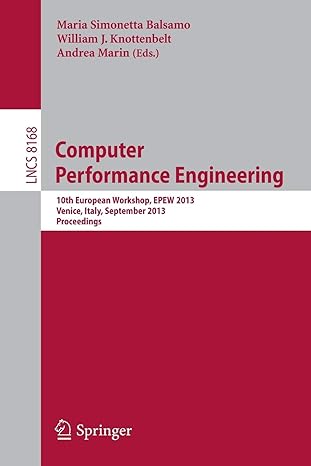Question
10.8 Heapify a Vector. The heapify operation converts an arrayof values into a valid max-heap form. In this lab, you'll performheapify on a vector of
10.8 Heapify a Vector. The heapify operation converts an arrayof values into a valid max-heap form. In this lab, you'll performheapify on a vector of integers:
void heapify(std::vector &v, int &diff); // FunctionPrototype
The function takes a reference to a vector as an argument andheapifies it according to the heapify logic described below. Also,your function should calculate how many positions in the vectorchanged value as compared to the starting point. This value shouldbe returned in the diff variable.
Logic for computing the diff variable = for each position in thenew and old vector: if the positions have different value:diff++
Driver Function:
int main()
{
vector v = {20, 19, 100, 2};
int diff = 0;
heapify(v, diff);
cout << "Different in " << diff << " positions.Heap: ";
for(int i: v)
cout << i << ", ";
cout << endl;
return 0;
}
Heapify Logic: (pseudocode)
heapify() {
m = get the last used internal node index // everything after isa leaf
while( m >= 0 ) {
MaxHeapPercolateDown(m);
m--;
}
}
MaxHeapPercolateDown(nodeIndex, size) {
val = heapArray[nodeIndex]; //nodeIndex starts as 0
child_index = nodeIndex*2+1; // get first child index
while(child_index < size){
max_val = val;
max_index = -1;
for (i=child_index; i
if(heapArray[i] >max_val) {
max_val =heapArray[i];
max_index= i;
}
if (max_val == val) return; // nothingelse to do
swap(max_index,nodeIndex);
nodeIndex = max_index;
child_index = 2*nodeIndex + 1;
}
}
** Use the given logic and driver function to implement: voidheapify(std::vector &v, int &diff);
Step by Step Solution
There are 3 Steps involved in it
Step: 1

Get Instant Access to Expert-Tailored Solutions
See step-by-step solutions with expert insights and AI powered tools for academic success
Step: 2

Step: 3

Ace Your Homework with AI
Get the answers you need in no time with our AI-driven, step-by-step assistance
Get Started


